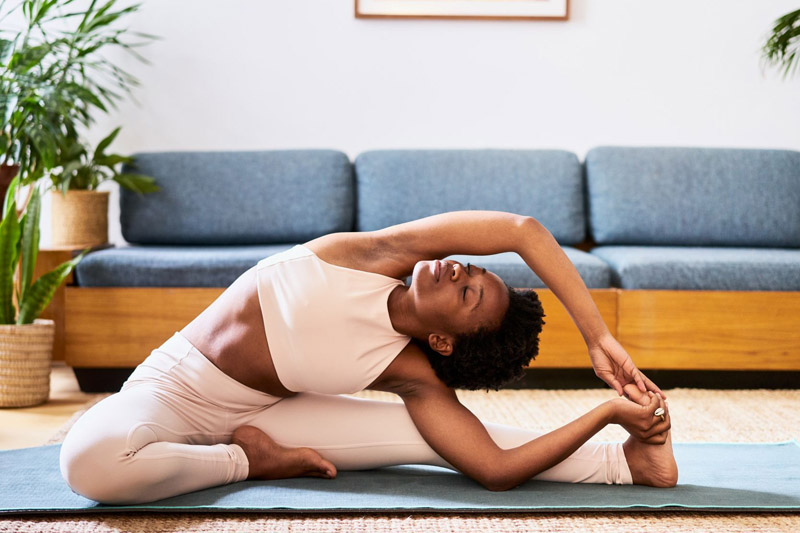Pilates, renowned for its emphasis on core strength, flexibility, and overall body awareness, has become a popular choice for individuals seeking a holistic approach to fitness. Among the various components of Pilates, stretching plays a pivotal role in promoting flexibility, improving posture, and enhancing muscle endurance. In this comprehensive guide, we will explore the significance of Pilates stretching within a workout routine, delve into key principles, and highlight specific exercises to help you unlock the full potential of this dynamic and transformative practice.
The Essence of Pilates Stretching:
Pilates stretching is more than just a series of elongating movements; it’s a fundamental aspect of the Pilates philosophy that contributes to the development of a strong, supple body. Unlike traditional static stretching, Pilates incorporates dynamic stretching, which involves controlled, flowing movements that aim to improve flexibility and strength simultaneously.
Key Principles of Pilates Stretching:
- Control: Pilates places a strong emphasis on controlled, precise movements. Each stretch is performed with a focus on maintaining proper form and alignment, preventing overextension or strain.
- Breath Work: Integrating breath with movement is a cornerstone of Pilates. Coordinating breath with stretches helps improve oxygenation of muscles, promoting relaxation and enhanced flexibility.
- Flow: Pilates stretching is characterized by fluid, flowing sequences. Movements seamlessly transition from one to the next, fostering a sense of continuity and engagement.
Benefits of Pilates Stretching:
- Improved Flexibility: Pilates stretching targets and lengthens muscles, leading to increased flexibility. Enhanced flexibility contributes to improved range of motion, reduced muscle tension, and a decreased risk of injury.
- Enhanced Posture: Pilates emphasizes core strength and spinal alignment. Stretching exercises help release tension in the muscles surrounding the spine, promoting better posture and alignment.
- Increased Body Awareness: Pilates encourages mindful movement and heightened body awareness. Stretching exercises engage both the mind and body, fostering a deeper connection and understanding of one’s physical capabilities.
- Muscle Endurance: The controlled and deliberate nature of Pilates stretching builds muscle endurance. As muscles are elongated and strengthened, they become more resistant to fatigue.
- Stress Reduction: Incorporating Pilates stretching into your routine can have a calming effect on the nervous system. The focus on breath and controlled movements contributes to stress reduction and improved overall well-being.
Pilates Stretching Exercises:
- The Saw:
- Sit with legs extended in a V shape.
- Rotate your torso to one side, reaching your opposite hand towards the outside of the opposite foot.
- Feel the stretch along the spine and hamstrings.
- Return to the center and repeat on the other side.
- The Swan Dive:
- Lie on your stomach with your arms extended overhead.
- Lift your upper body and legs simultaneously, arching your back.
- Feel the stretch in your abdominal muscles and spine.
- Lower back down with control.
- The Mermaid:
- Sit with one leg bent in front and the other extended to the side.
- Reach your arm overhead towards the extended leg, creating a lateral stretch.
- Hold, feeling the stretch along the side of your body.
- Repeat on the other side.
- The Open-Leg Rocker:
- Sit with legs extended, forming a V shape.
- Hold your ankles and rock backward, then forward, balancing on your sit bones.
- Engage your core to control the movement.
- Feel the stretch in your spine and hamstrings.
Incorporating Pilates Stretching into Your Routine:
- Warm-Up: Begin with a brief warm-up to prepare your muscles for stretching. Gentle movements such as neck rolls, shoulder circles, and pelvic tilts can be effective.
- Consistency is Key: Aim to incorporate Pilates stretching into your routine 2-3 times a week for optimal results. Consistent practice will lead to progressive improvements in flexibility and strength.
- Mindful Breathing: Pay attention to your breath throughout each stretch. Inhale deeply to prepare for the stretch and exhale as you move into it. This coordinated breathwork enhances the effectiveness of Pilates stretching.
- Modify as Needed: Pilates offers modifications for various fitness levels. If a stretch feels too challenging, consider modifying the movement to suit your current abilities. As you progress, you can gradually increase the intensity.
Conclusion:
Pilates stretching is a dynamic and transformative component of this holistic approach to fitness. By integrating controlled, flowing movements with mindful breathing, Pilates stretching offers a unique and effective way to enhance flexibility, improve posture, and build overall body awareness. Whether you’re a Pilates enthusiast or a newcomer, unlocking the benefits of Pilates stretching can elevate your workout routine and contribute to a more balanced, flexible, and resilient body. Embrace the principles, practice with intention, and discover the profound impact of Pilates stretching on your journey to a healthier, more vibrant you.

